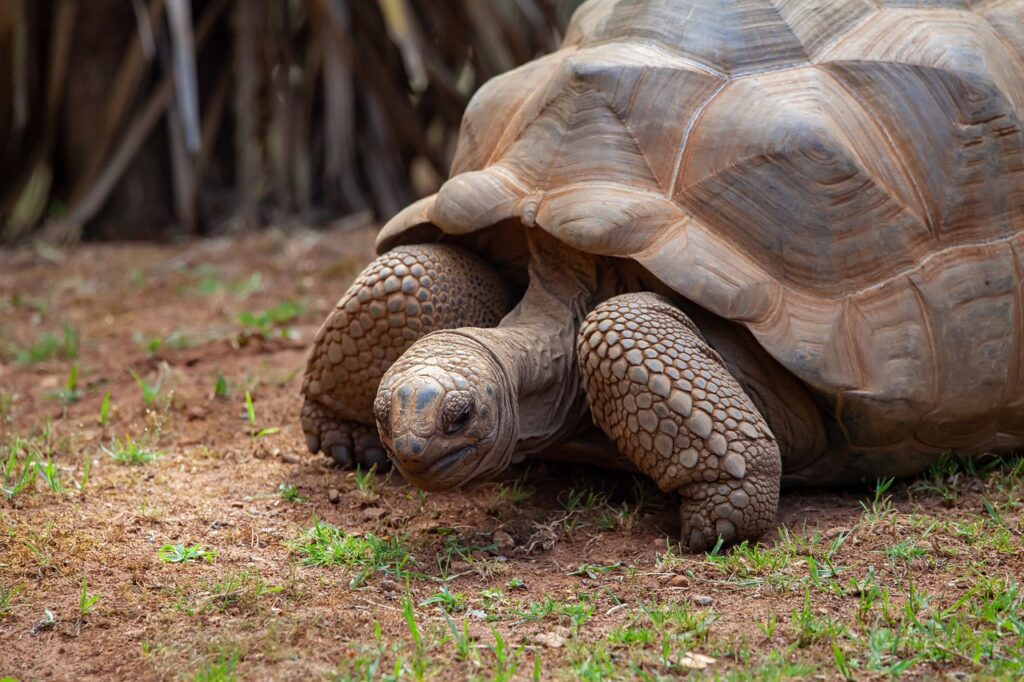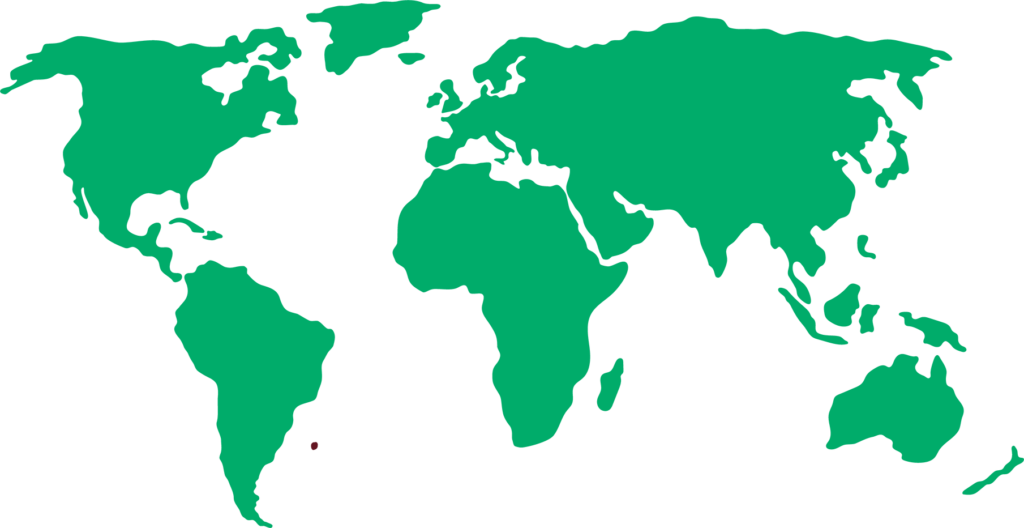ALDABRA GIANT TORTOISE
Aldabrachelys gigantea

LENGTH

1,3 m
WEIGHT

250 kg
LIFESPAN

150 years
Until recently, the Aldabra giant tortoise had Geochelone gigantea as scientific name. It is the largest tortoise in the world after the Galapagos giant tortoise, native to the island of Aldabra.
General characteristics
The caparace of the Aldabra giant tortoise is reddish-brown in color with a high, dome. It has sturdy legs with many scales to support the body. The neck is extremely long, even for its large size, which helps the animal to reach tree branches that are higher up.
Females are generally smaller than males, both in size and weight.
They are very similar to the giant tortoises of the Galapagos, but the difference is that the Galapagos has a small nuchal plate that the Aldabra tortoise doesn´t have.
Feeding
It is a herbivore that feeds on grasses, leaves, stems and fruits. Occasionally, it may also eat small invertebrates or carrion, including bodies of other tortoises.
Behaviour
They are found both individually and in herds, which tend to gather mainly in open grasslands. They are most active in the mornings, spending time grazing and foraging for food.
They dig wallows under the ground, hide under the shade of trees or in small caves, and dive into pools of water to cool off during the hottest part of the day.
They are generally slow and cautious, but when threatened, they are able to reach a considerable speed.
Reproduction
Mating takes place between February-May and females lay 10-25 hard-shelled eggs in a 30 cm deep nest. The fertility rate of the eggs is very low, less than half of the eggs are fertilised. The incubation period lasts 8 months.
Threats
Their main threats is the destruction of their natural habitat, as it is prohibited by law the hunting of these animals. As a species concentrated in almost a single small region, it is more vulnerable and fragile to changes in its habitat.
Distribution
These turtles are found on the islands of Aldabra Atoll in the Seychelles archipelago in the Indian Ocean. They live in areas with dense vegetation and at low altitudes.

Did you know?
Their sexual maturity is determined by size, not age.
They are among the longest-lived animals, with some individuals to be over 200 years of age.
They can drink from their nostrils and store large amounts of water and food in their bodies.
Conservation status
